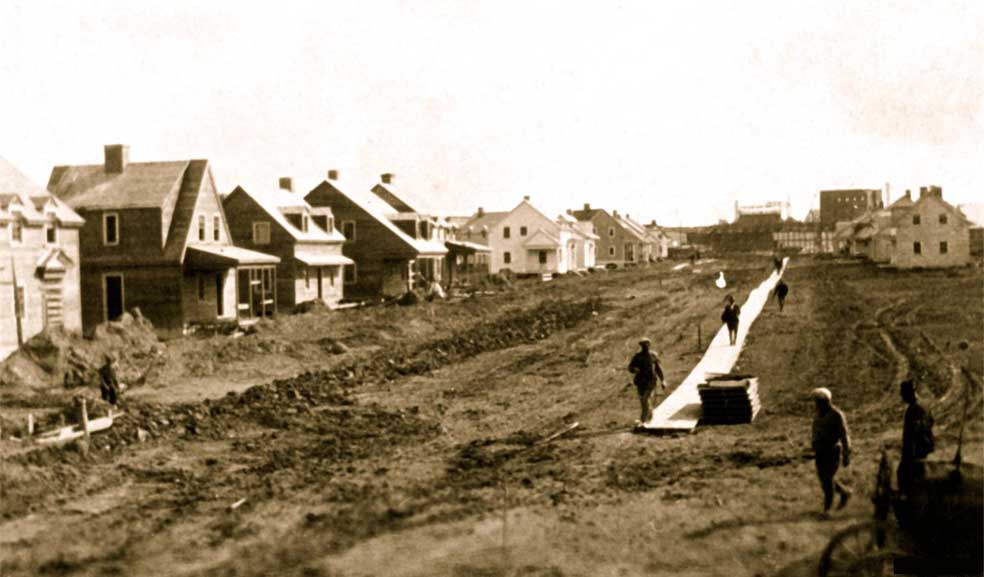Planification and standardisation; optimization of the construction site to develop a unique living environment
The construction of Arvida began in the summer of 1926 and spanned several years; as the smelter was producing its first ingots, construction of its first churches and schools was underway, 270 houses were built in 135 days. In the overall urban plan, established over the 2,400 hectares acquired by the company to build its aluminum metropolis, neighbourhoods surrounding the smelter rose from the ground, so to speak.
Residential development is ongoing, still in accordance with the principles of rationalization, which optimized the speed of construction, while diversifying house models based on their architectural components, bringing the residential park of Arvida to over 2000 housing units. Renowned designers were put to task, namely Ernest Isbel Barott, Léonce Desgagné, Harold Lea Fetherstonhaugh, Alexander Tilloch Galt Durnford and Henry Wiggs. To ensure the municipality's growing range of action, the aluminum company implements, in 1942, an innovative urban planning committee, chaired by none other than Frederick Todd, to oversee the preservation of the city's landscape and monuments, such as its unique aluminum bridge.
By the early 1950s, houses deriving from residents’ initiative are now being built, integrating the original urban plan, and Arvida, now a city, capital and metropolis, had kept every promise that could be foreseen.





 Official City of Saguenay website
Official City of Saguenay website